The 5-Move Beginner Strength Workout for a Lean Upper Body
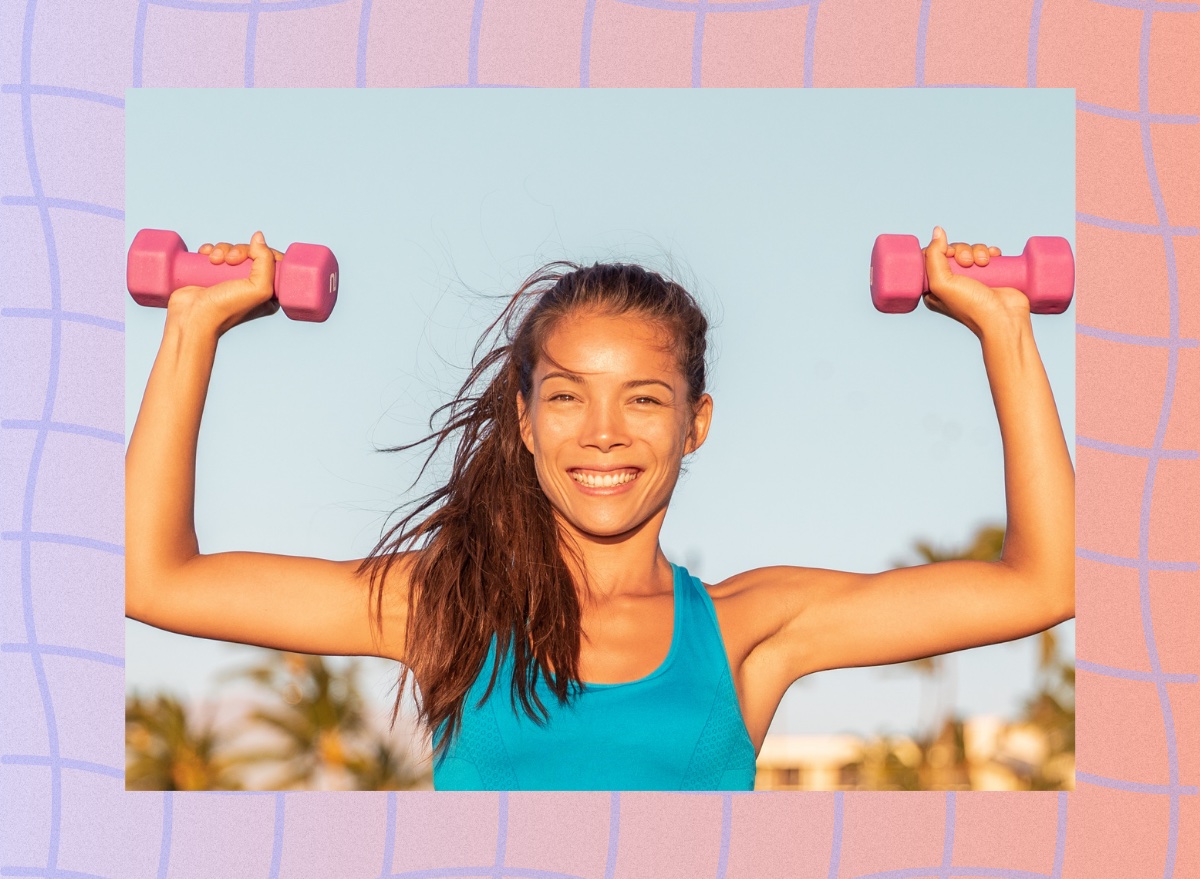
Starting a new strength training routine can be intimidating whether you're a beginner or an advanced weightlifter. With so many workouts to choose from and conflicting information online, not to mention all the different pieces of equipment at the gym, just knowing how everything works and where to begin are accomplishments in themselves. Fortunately, ETNT is here to help. We spoke with Mike Masi, CPT, a certified personal trainer at Garage Gym Reviews, who shares a beginner-friendly strength workout for a lean upper body, regardless of your fitness level.
Building a lean upper body is both achievable and essential for overall health and fitness. For example, a 2023 review found that upper-body training can help boost cardiovascular function by improving how efficiently your upper body utilizes oxygen. Having a strong upper body can make daily tasks easier. Also, a well-rounded strength workout helps sculpt your muscles and improves your metabolic health and bone density, setting a solid foundation for success on your fitness journey.
Before diving into the exercises below, Masi offers some expert tips. "Begin with a five to 10-minute warm-up of light cardio or dynamic stretching to prepare your muscles," he suggests. "Allow for at least 90 seconds of rest between sets to help your muscles recover. If you feel more rest will allow for more reps on the next set, go for it. Especially for beginners, focusing on correct form is more important than the weight you lift. Adjust weights as necessary to maintain good form."
Read on for Masi's five-move beginner strength workout for a lean upper body and detailed instructions for each exercise. And next, don't miss The #1 Best Post-Workout Snack for Bigger Muscles.
Leg-Assisted Pull-ups
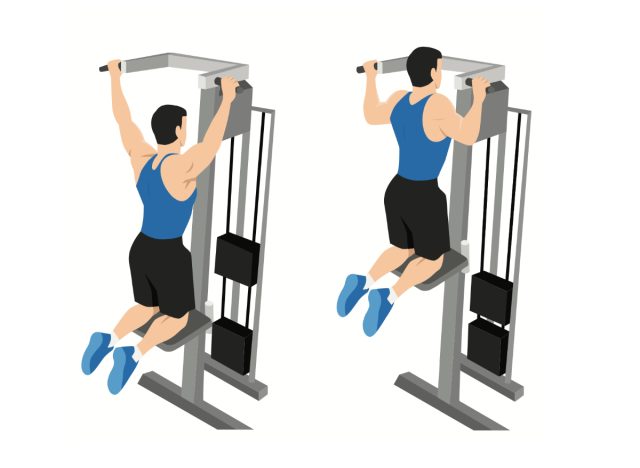
This variation on the classic bodyweight pull-up can help you gradually build the strength needed for traditional pull-ups by providing support from your lower body while still engaging your upper back, shoulders, and biceps.
To perform this move, Masi says, "Grip the bar with your hands shoulder-width apart and palms facing away from you. Keep at least one foot on a bench or box for assistance. Pull your chest toward the bar, using your legs as little as possible to get the desired rep ranges. Lower yourself back down with control."
As your strength increases, use your legs less for support until you can do traditional pull-ups unassisted. Masi adds that you can also use your legs to access the top position of the rep before controlling your body weight unassisted during the pull-up descent for at least five seconds. Aim for three or four sets of six to 10 reps.
Dumbbell Lateral Raises
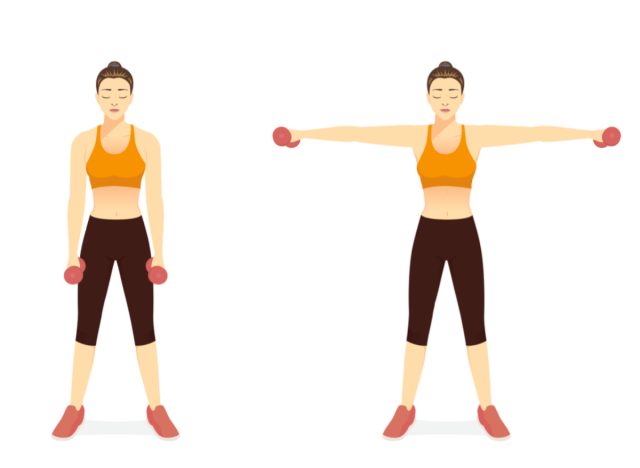
Dumbbell lateral raises engage the lateral (side) deltoid muscles, helping to sculpt and strengthen your shoulders for better posture and upper-body definition.
"Stand with your feet shoulder-width apart, holding a dumbbell in each hand at your sides," Masi instructs. "Keeping a slight bend in your elbows, raise the dumbbells to your sides until your arms are parallel with the floor. You may go slightly higher than this if your shoulders feel good but don't force it. Lower the dumbbells back to the starting position with control."
As you get stronger with your lateral raises, increase the number of reps before increasing the weight. When the time comes to increase the weight, make minor adjustments, as each extra 2.5-pound increment can make the exercise significantly more challenging.
Single-arm Dumbbell Rows
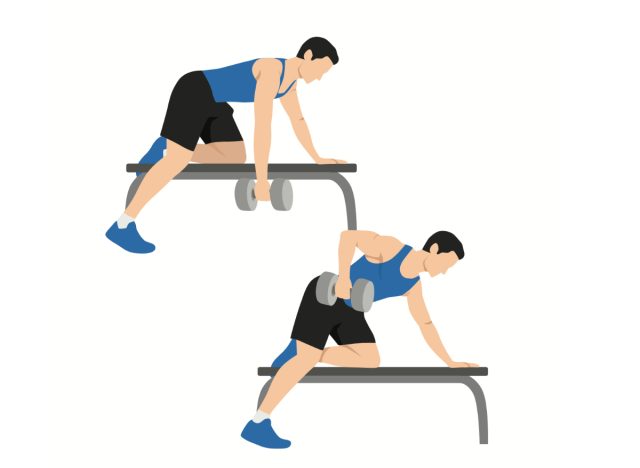
This exercise allows you to isolate each side of your trunk and back independently, which can improve muscle balance and target the latissimus dorsi for a stronger, more defined back.
"Stand to the right of a bench, placing your left knee and left hand on it for support. Hold a dumbbell in your right hand with your arm extended. Keep your spine straight as you pull the dumbbell up to your side. Lower the dumbbell back to the starting position with control. Perform all reps, then repeat on the other side," says Masi.
To make it more challenging over time, increase the weight or number of reps. Complete three or four sets of eight to 12 reps per side.
Dumbbell Bench Presses
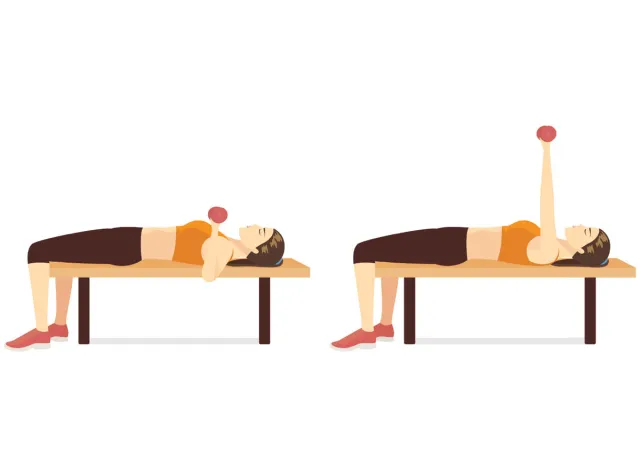
The dumbbell bench press is a comprehensive upper-body move that research says targets the pectoral muscles in your chest, the triceps in the back of your upper arm, and your shoulders.
To perform this move, Masi says, "Lie on a bench with a dumbbell in each hand and arms extended above your chest. Make sure your feet are planted on the floor. Lower the dumbbells to the sides of your chest slowly. Press the dumbbells back up to the starting position. Keep the elbows under the wrist throughout the repetition."
Aim for three or four sets of 10 to 12 reps.
Plank-to-Pushup
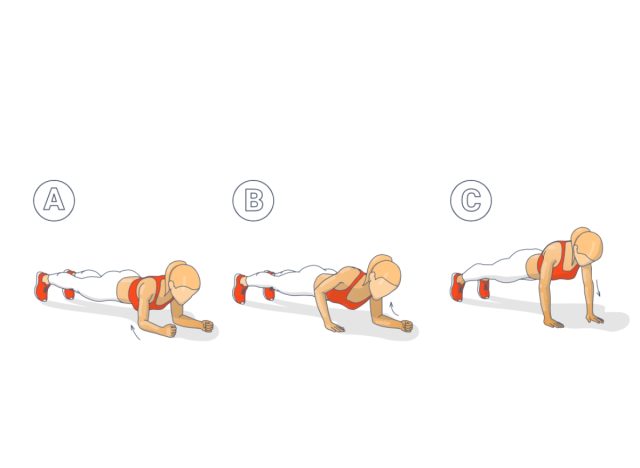
To finish off this stellar, beginner-friendly strength workout, we will do the plank-to-push-up. This dynamic exercise transitions between a plank position and a push-up, engaging multiple muscle groups like your core, chest, shoulders, and triceps for a highly efficient workout.
"Start in a plank position with your forearms on the ground and your body in a straight line," says Masi. "Push up from one arm to place your hand where your elbow was, and then follow with the other arm until you are in a push-up position. Return to the starting plank position by placing one forearm down and then the other."
Complete three or four sets of eight to 12 reps per side.









